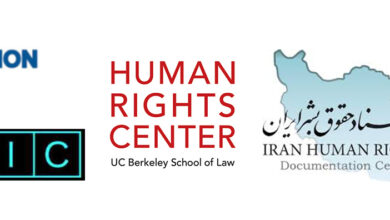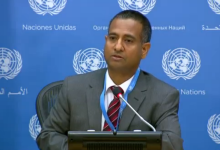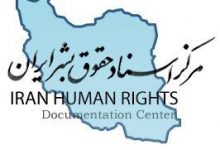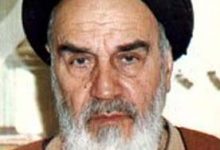Aadel Collection
Iran executions send a chilling message
Iran execuflois send a chilling message Anmesty Inteniafional lttp://wwwanmestyorg/en'iews-and-updates/iran-exectthons-send-chllli
AMNESTY
I NIERNATI ONAL ________________________
In your country:
1 of 6 28/07 2010 09:43
Iran execuflois send a chilling message Anmesty Inteniafional lttp://wwwanmestyorg/en'iews-and-updates/iran-exectthons-send-chllli.
> Home > Iran executions send a chilling message
IRAN EXECUTIONS SEND A CHILLING
MESSAGE
30 March 2010
Recent
developments
in Iran have
prompted fears _____________________
that the Iranian
authorities are
once more
using
executions as a
tool to try and
quell political
unrest,
intimidate the
population and
send a signal
that dissent will
not be
tolerated.
There was a
noticeable
surge in the
rate of
executions at
the time of
mass protests
over last year's
disputed
Presidential
elections.
Although many
of the
executions
were for
criminal
offences
committed
before the
unrest, they
sent a chilling
message to
those involved in protests.
There was a rise in executions of ju enile
offenders like Delara Darabi who was put to
death in April
© www.rnyspace.cornfhelpdelsrs
lnteniiew with Philip A lston, UN Special
Rapporteur on Extrajudicial, Summary or
Arbitrary Executions
© Amnesty Internstionsl
Download this audio file
Executions increased at the time of mass
protests o er last year's Presidential election
© Javad Montazeri
A series of ‘show trials' led to two men being
hanged in January
© APGraphicsBank
2 of 6
28/07 2010 09:43
Iran execuflois send a chilling message Anmesty Inteniafional lttp://wwwanmestyorg/en'zews-and-updates/iran-exectthons-send-chllli
One hundred and twelve people were put to death in the eight
weeks between the June election and the re-inauguration of
President Mahmoud Ahmadinejad in early August- almost a
third of the total for the entire year.
In 2009 as a whole at least 388 people were put to death in
Iran - the largest number recorded by Amnesty International in
recent years. Figures collated by various human rights
organizations, including Amnesty International, suggest the
annual number of executions has almost quadrupled since
President Mahmoud Ahmadinejad was first elected five years
ago. Many of those executed did not receive fair trials.
“The continuing surge in executions at a time when Iran has
experienced the most widespread popular unrest since the
1979 Islamic Revolution, combined with numerous statements
by officials threatening protestors with execution, indicates
that the Iranian authorities are again using the death penalty
to try and cow the opposition and silence dissent,” said
Hassiba Hadj Sahraoui, Amnesty International's Deputy
Director for the Middle East and North Africa.
“SHOW TRIALS”
A series of “show trials” led to two men being hanged in
January; the first executions which the authorities linked
directly to the current unrest; although it later emerged that
the pair were already in detention at the time of last June's
presidential election.
Among other things, they were convicted of “mohabareh”, or
“enmity against God”. Nasrin Sotoudeh, lawyer for one of the
men, Arash Rahmanipour, told Reuters “An execution with
this speed and rush has only one explanation ... the
government is trying to prevent the expansion of the current
(opposition) movement through the spread of fear and
intimidation.”
An increasing number of people have been charged with
“moharebeh”, a vaguely-defined offence. According to Philip
A lston, the UN's Special Rapporteur on extrajudicial, summary
or arbitrary executions, it is “imposed for a wide range of
crimes, often fairly ill-defined and generally having some sort
of political nature.”
At least nine other people, sentenced to death following the
popular demonstrations which began last summer and were
continuing at the end of 2009, are believed to be on death
row.
Recent comments by Tehran prosecutor Abbas Ja'fari
3 of 6 28/07 2010 09:43
Iran execufioi's send a chilling message An'mesty Inten'iafional lttp://www,anmesty,org/en'mws-and-updates/iran-exectthons-send-chllli,,,
Dowlatabadi served to fan suspicions that the sentences
were politically motivated. Referring to the imposition of death
sentences on a group of protesters, he said: “Today the
Islamic system has firmly put its opponents and dissidents in
their place. The people will not allow such incidents to
reoccur in the country.
EXECUTIONS UNDER PREVIOUS GOVERNMENTS
This is not the first time that Iran's leaders have been accused
of using summary executions or the death penalty as a tool of
political control. Executions were used extensively under the
Shah, and in the early days of the Islamic Republic as a way
of eliminating political enemies and suppressing opposition.
In the 1 970s, an increasingly unpopular Shah used the mass
arrest of political opponents to eliminate political enemies and
suppress opposition. At the time, Amnesty International
criticized the Iranian authorities for what it described as the
“extremely high number of executions” conducted after unfair
trials by military tribunals.
In 1979, more than 600 people were summarily executed by
firing squad in the months following the Islamic Revolution.
Many were former ministers, officials or army officers under
the Shah. Some were executed after grossly unfair trials
lasting only afew minutes. By 1982, Amnesty International
had recorded well over 4,000 executions since the time of the
Revolution.
But the largest number of summary executions came in 1988.
Up to 5,000 people — many of them political prisoners - are
believed to have died in the so called ‘prison massacre”
between 1988 and 1989, in what Amnesty International
described at the time as a “purposeful mass killing of political
opponents.” Many were members of the People's Mojahedin
Organization of Iran, an opposition organization accused of
collaborating with Saddam Hussain's Iraq during the eight
year Iran-Iraq war. But others were members of secular,
left-wing political parties regarded as a threat to Iran's Islamic
system. In many cases, their “trials” consisted of a few
questions put to them in their prison cells by members of what
prisoners dubbed “The Death Commission”.
A REVIVAL OF THE DEATH PENALTY
The number of executions decreased in the 1990s. (Death
sentences were handed down in the wake of student unrest
in 1999, but were not implemented.) But they rose rapidly
again after President Ahmadinejad was elected in 2005,
pledging to improve public order, take action against “thugs
4 of 6 28/07 2010 09:43
Iran execuflois send a chilling message An'mesty Inteniafional lttp://www.anmestyorg/en'mws-and-updates/iran-exectthons-send-chllli.,,
and hooligans' and return Iran to the original values of the
Islamic Revolution.
There was also a rise in the number of executions of juvenile
offenders — people sentenced to death for crimes committed
when they were under the age of 18. Iran is one of only a
handful of countries to continue such executions, in clear
violation of international law. According to UN Special
Rapporteur Philip A lston “No state really tries to defend it as a
matter of principle - it's clearly outlawed. And yet Iran
continues to not only charge juveniles, but to execute them in
significant numbers.”
Even before last summer's unrest, there were signs that
President Ahmadinejad's government was increasingly using
the death penalty as a way of stemming unrest in areas with
large ethnic minorities. Bomb attacks in the predominantly
Arab province of Khuzestan and ethnic Baluch areas of
Sistan-Baluchistan province in recent years were followed by
a wave of often public executions. Some of the condemned
men were shown on state television making “confessions”
that are believed to have been extracted from them under
torture or other duress.
Ehsan Fattahian, arrested in 2008 and convicted of being a
member of a Kurdish opposition group, was executed last
November. In a letter sent two days before he was hanged,
he said his original sentence had been increased because he
refused to appear on camera confessing to crimes he had not
committed. He alleged that this move was “a result of
pressure from security and political forces outside the
judiciary.” Since last year's unrest, the number of Iranian
Kurds being sentenced to death for political offences has
continued to rise.
UN Special Rapporteur Philip Alston adds that “International
law says very clearly that the death penalty can only be
carried out for the most serious crimes. I have shown very
clearly that that phrase was intended to refer to crimes which
result in an intentional death of some sort - homicide - and
that any lesser crimes cannot be punished by the death
penalty. Again, that is a prohibition that the Iranian courts and
the Iranian government have consistently neglected or
ignored.”
Hundreds, probably thousands, of individuals are currently on
death row in Iran. Sometimes their ordeal can last for years.
Amnesty International spoke to one prisoner who spent years
on death row before his sentence was eventually commuted.
In a telephone interview from jail he said:
5 of 6 28/07 2010 09:43
Iran execuflois send a chilling message Anmesty Inteniafional lttp://www.anmestyorg/en'iews-and-updates/iran-exectthons-send-chllli.,,
“Have you ever experienced receiving a death sentence?
Have your partner, parents, brother, sister and relatives been
told that tonight a close relative of yours is going to be
executed? Can you understand the horror and shock of
hearing such news? But me, two of my close relatives and our
families have been going through this — not for a night or two
or few nights, but for a period of over two thousand nights.”
READ MORE
Death penalty report: China must end secrecy
surrounding sentences and executions (News, 29 March
2010)
The death penalty in 2009
Delara Darabi executed in Iran (News, 30 April 2009)
Francais Español
6 of 6 28/07 2010 09:43







